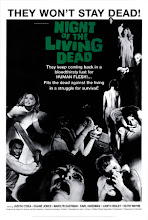
The Curse Of The Crying Woman
aka La Maldición De La Llorona
Director Rafael Baledón Writers Rafael Baledón, Fernando Galiana
Cast Rosita Arenas (Amelia), Abel Salazar (Jaime), Rita Macedo (
 Tonight we revisit the world of Mexican Gothic, a glorious period in
Tonight we revisit the world of Mexican Gothic, a glorious period in
 La Llorona the Crying Woman is an old Mexican tale of a peasant woman who gives birth to a rich man's child, only to be spurned for a more acceptable new bride. The woman then kills the baby and commits suicide, leaving her wailing ghost to roam the countryside looking for her lost child. The much-told story is often associated with that of Dona Marina, an Aztec princess who bears the child of Hernan Cortez; the scars of class-bound shame are thus stitched to the deeper wounds of the Spanish invasion and colonization. In other versions, La Llorona is a supernatural predator, a witch who had possibly died during childbirth, and thus feasts on the misery of dying infants.
La Llorona the Crying Woman is an old Mexican tale of a peasant woman who gives birth to a rich man's child, only to be spurned for a more acceptable new bride. The woman then kills the baby and commits suicide, leaving her wailing ghost to roam the countryside looking for her lost child. The much-told story is often associated with that of Dona Marina, an Aztec princess who bears the child of Hernan Cortez; the scars of class-bound shame are thus stitched to the deeper wounds of the Spanish invasion and colonization. In other versions, La Llorona is a supernatural predator, a witch who had possibly died during childbirth, and thus feasts on the misery of dying infants.
 It's tale often filmed, either as a traditional ghost story, or by exploiting the brand name in a tenuously-linked narrative. In The Curse Of The Crying Woman, the figure of La Llorona is no longer looking for her own child, and is instead an otherworldly superwitch, possessing the souls of her descendants. The spirit is still wailing and quite supernatural to the point of vampiric – her possessed relatives avoid daylight hours, won't cast a reflection, salivate at the sight of blood, and perform the old Bela Lugosi trick of walking straight through cobwebs.
It's tale often filmed, either as a traditional ghost story, or by exploiting the brand name in a tenuously-linked narrative. In The Curse Of The Crying Woman, the figure of La Llorona is no longer looking for her own child, and is instead an otherworldly superwitch, possessing the souls of her descendants. The spirit is still wailing and quite supernatural to the point of vampiric – her possessed relatives avoid daylight hours, won't cast a reflection, salivate at the sight of blood, and perform the old Bela Lugosi trick of walking straight through cobwebs.
 Fate and enduring evil are just two themes at work in The Curse Of The Crying Woman. The young and beautiful Amelia brings her new husband Jaime to meet her long-estranged aunt
Fate and enduring evil are just two themes at work in The Curse Of The Crying Woman. The young and beautiful Amelia brings her new husband Jaime to meet her long-estranged aunt
 Abel Salazar as Jaime is always a welcome face in Mexican horrors, and takes on the producer's reins as he did in The Vampire and The Brainiac. As Aunt Selma, Rita Macedo is perfect at containing her inherent evil and thirst for power behind her beautifully benign mask. The house itself takes on a menacing role, a secluded mausoleum straight out of Poe's Fall Of The House Of Usher, and its ultimate demise is nothing short of spectacular; even the studio-bound forest takes on the ever-present threat of death, as in another snapshot moment of Amelia surrounded by hundreds of eyes staring accusingly from the branches.
Abel Salazar as Jaime is always a welcome face in Mexican horrors, and takes on the producer's reins as he did in The Vampire and The Brainiac. As Aunt Selma, Rita Macedo is perfect at containing her inherent evil and thirst for power behind her beautifully benign mask. The house itself takes on a menacing role, a secluded mausoleum straight out of Poe's Fall Of The House Of Usher, and its ultimate demise is nothing short of spectacular; even the studio-bound forest takes on the ever-present threat of death, as in another snapshot moment of Amelia surrounded by hundreds of eyes staring accusingly from the branches.
 All the elements are in place – bloodsucking beauties, bats in the bell tower, the Thing in the attic, and those black, black eyes – for a bona fide masterpiece of Mexican horror. I hope you are suitably unnerved by The Curse Of The Crying Woman.
All the elements are in place – bloodsucking beauties, bats in the bell tower, the Thing in the attic, and those black, black eyes – for a bona fide masterpiece of Mexican horror. I hope you are suitably unnerved by The Curse Of The Crying Woman.





















































































1 comment:
buena película.
Post a Comment